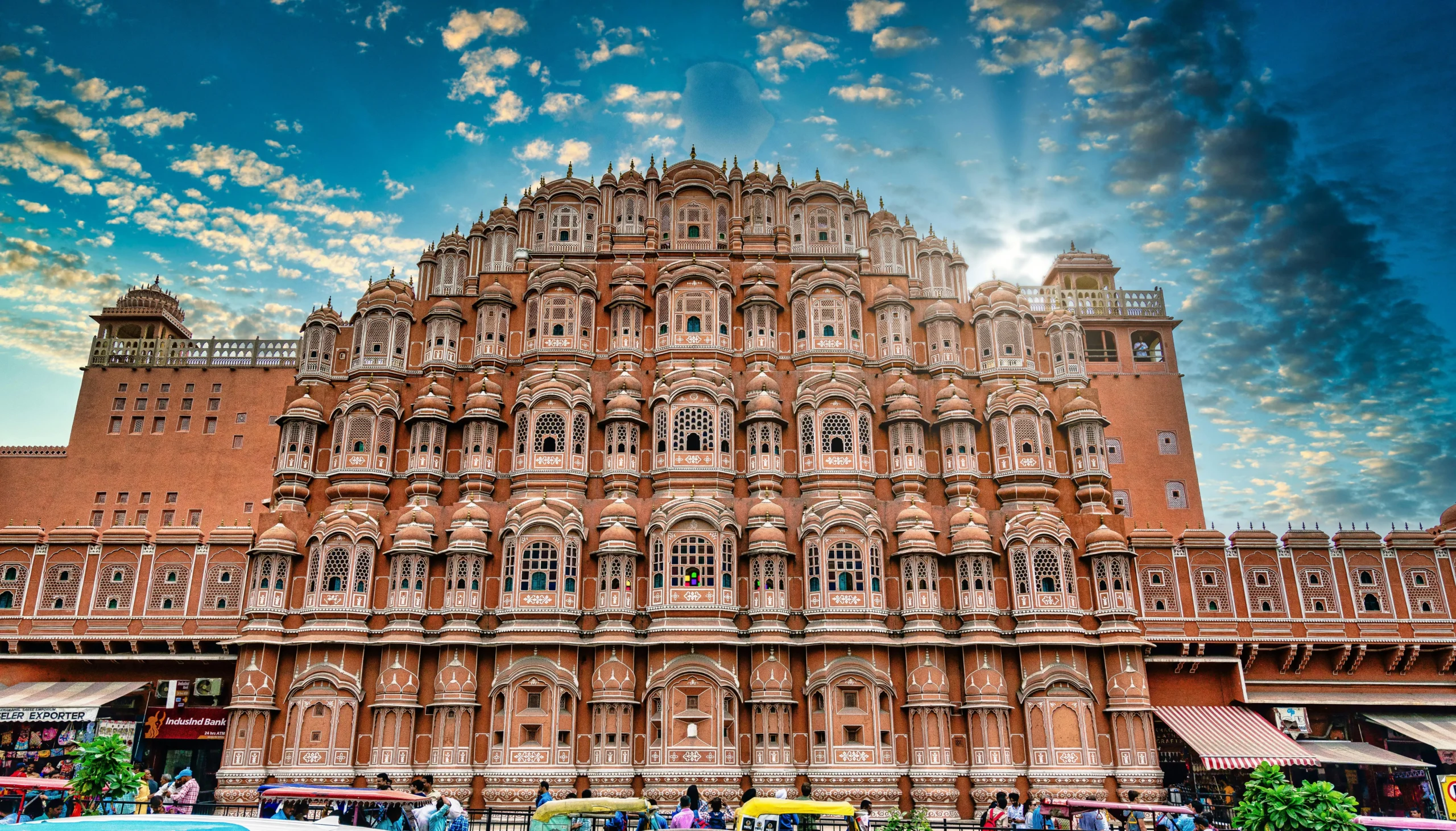
One Day Tour Of Sightseeing Of Jaipur
Jaipur is a land of Rajput grandeur and known as the ‘Pink City’ of India. Maharaja Jai Singh II founded it in 1727, and it is well-known for its fascinating history, breathtaking architecture, and lively culture. Due to a law the Maharaja passed in 1853 to paint the city pink in honor of the Prince of Wales’ arrival, the city is well-known for its pink-colored buildings. The Amber Fort, City Palace, Jantar Mantar (an observatory for astronomy), Hawa Mahal (Palace of Winds), and Jal Mahal (Water Palace) are among of the main attractions. Jaipur is also well known for its traditional Rajasthani food, jewelry, and handicrafts. Jaipur is a modern metropolis that brings…
Places to visit in Jaipur in one day
You and your family will visit the following points of interest during our one-day local sightseeing tour of Jaipur:
City Palace, Jaipur
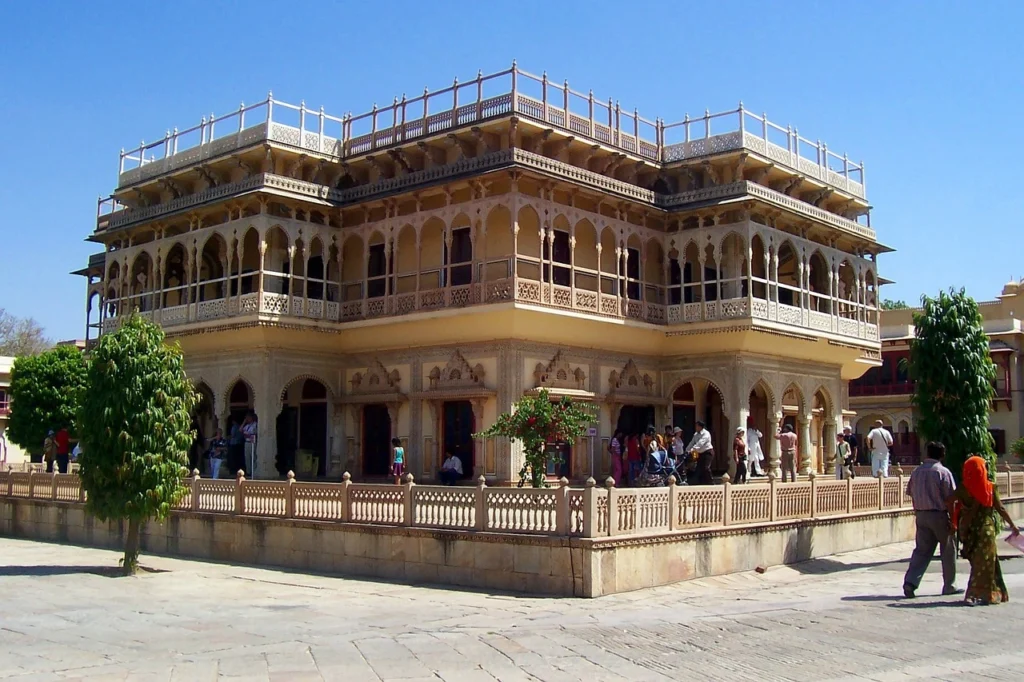
City Palace
After that, proceed to the City Palace, a large complex with museums, gardens, and a number of courtyards. The City Palace, constructed by Maharaja Sawai Jai Singh II between 1729 and 1732, combines Rajput and Mughal architectural elements. The royal family still resides in the palace, and a portion of it is accessible to the general public.
Important Points to Remember:
The royal family’s primary palace, Chandra Mahal (Moon Palace), has exquisite interiors with antiques and murals.
The museum of textiles and costumes is housed in the magnificent Mubarak Mahal (Welcome Palace) structure.
Discover the relics, royal attire, and weapons that the Jaipur monarchs once utilized at the City Palace Museum.
Jai Singh II constructed the palace’s exterior wall, but the palace within has seen numerous alterations and repairs throughout the years, some of which date back to the 20th century.
One sixth of the walled city is devoted to the vast palace complex. The Maharaja of Jaipur used to conduct all of his courtly business from the City Palace. The complex’s separation into a number of courtyards, buildings, and gardens is a particular emphasis of the palace’s elaborate planning.
City Palace is the ideal fusion of architecture, art, color, and culture thanks to its magnificent structures, well-kept lush green gardens, exquisite courtyards, and painstaking stonework.
Must-see ~ Activities: Take particular note to the carvings on the three gates.
The Hawa Mahal, Jaipur
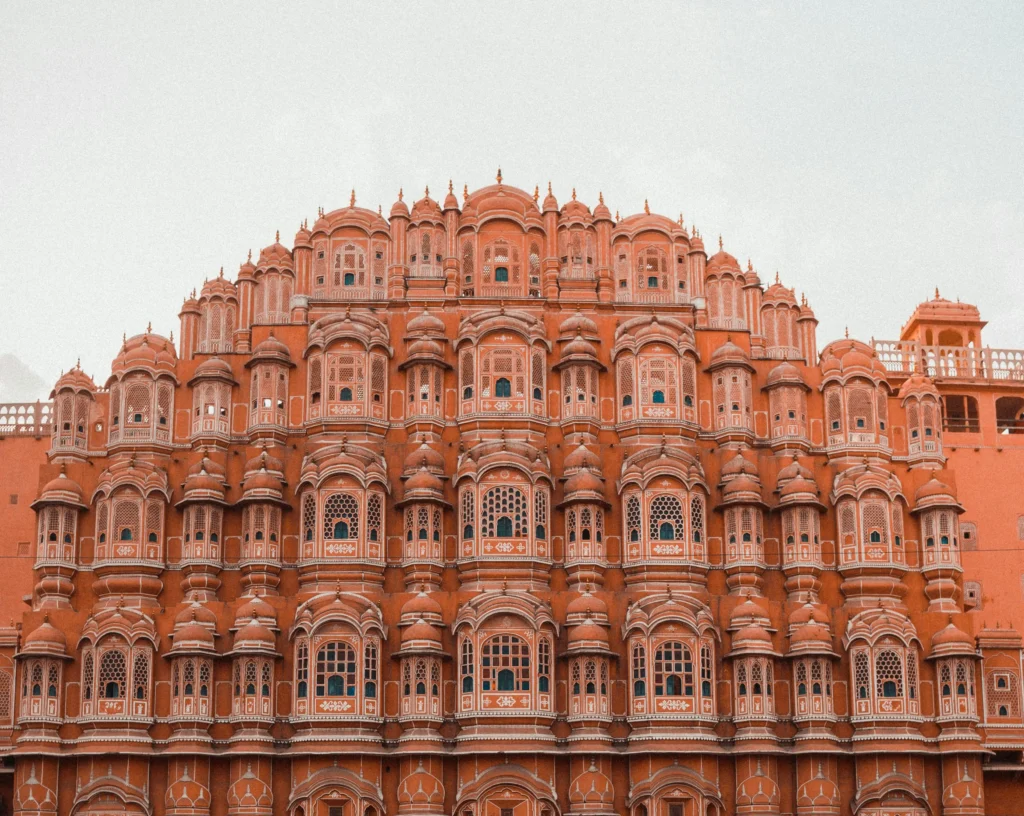
A private taxi makes it easy to get to the world-famous architectural wonder, Hawa Mahal, which is located at the intersection of Badi Chaupad’s main road and the popular market. Constructed in 1799 by Maharaja Sawai Pratap Singh, it has become the city’s iconic monument. Known as the “Palace of Winds,” this five-story building was constructed in 1799 by Maharaja Sawai Pratap Singh to enable royal women to observe street life covertly. The palace gets its name from its unusual architecture, which includes 953 tiny windows, or “jharokhas,” with elaborate latticework that let cool air in.
You enter the main palace through a wonderfully designed fountain, and the ramp takes you to the top stories. This building does not have stairs. A stunning view of the City Palace, Jantar Mantar, and Sireh Deori Bazaar can be seen from the palace’s top level.
The campus also has a tiny museum with some priceless artifacts and miniature artworks. The little stores next to the Hawa Mahal sell some beautiful mementos.
Must see \ Things to do: Take in the vista and the refreshing breeze while spending some quiet, calm time here.
.
Jantar Mantar, Jaipur
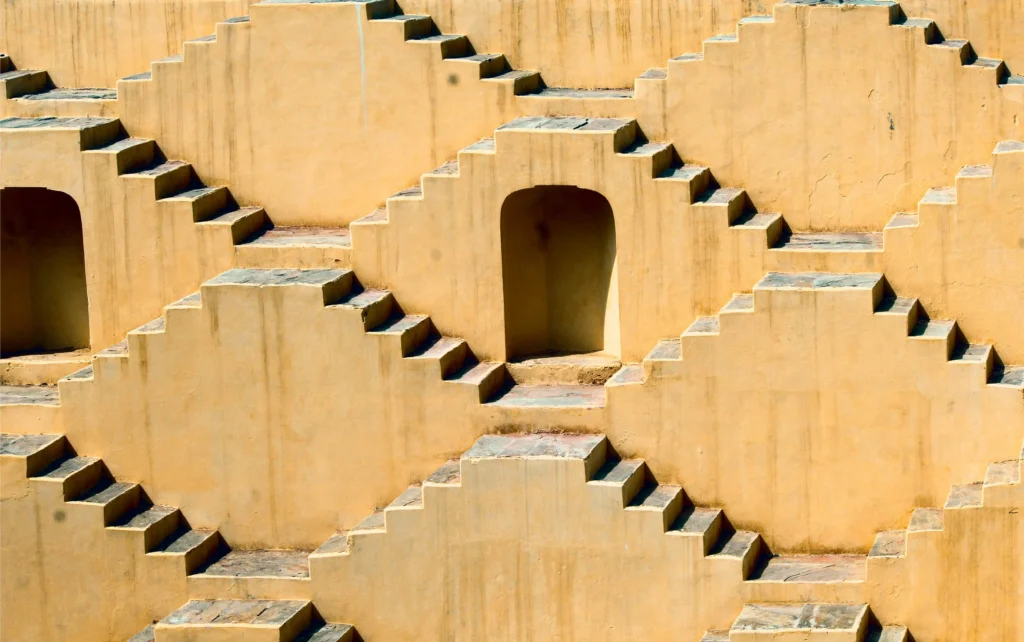
Our next destination on this one-day local sightseeing tour of Jaipur is the world’s largest stone astronomical observatory, Jantar Mantar. Nineteen amazing instruments made of brass and stone can be found in this ancient wonder. Raja Sawai Jai Singh constructed this observatory between 1727 and 1733, a five-year project.
The largest stone observatory in the world, Jantar Mantar, is only a short stroll from the City Palace. The observatory, which was constructed in the 18th century, has a remarkable array of astronomy instruments:
The largest stone sundial in the world is Samrat Yantra.
Jaiprakash Yantra: A tool for determining star placements.
The ideal monument to observe the wonder of mathematical, scientific, and engineering perfection is Jantar Mantar. When compared to its rivals in the northern region of India, Jaipur’s Jantar Mantar is also the biggest. For those who enjoy architecture and astronomy in particular, it is a must-see during this one-day excursion!
Must see \ Activities: Photographers have a rare chance to capture the symmetrical and asymmetrical structures!
Jal Mahal, Jaipur
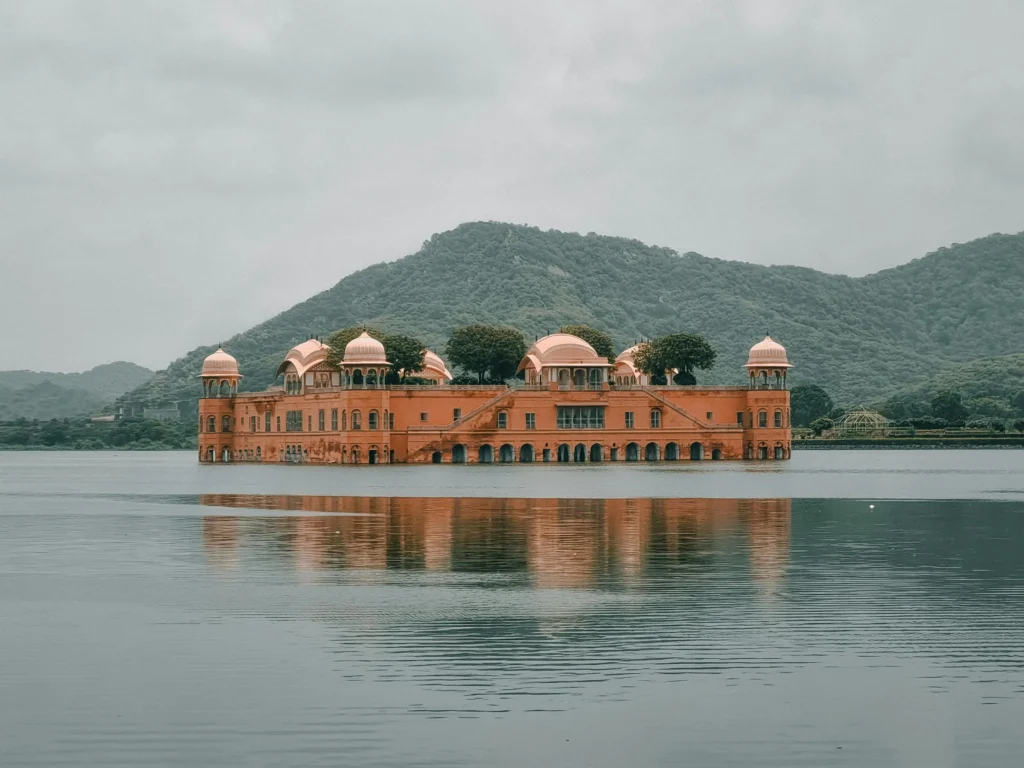
It can be costly to get to Jal Mahal, a little-known landmark in Jaipur, unless you have a private rental taxi. It is situated in the midst of Man Sagar Lake, some 7 kilometers from the city center. The Maharajas’ shooting lodge was formerly this low-rise, symmetrical palace.
These days, it attracts a sizable number of tourists and photography enthusiasts who simply wish to unwind by the lake’s edge. The palace combines Rajput and Mughal architectural elements. Although it is forbidden to enter the fort, you can still admire its architecture from the outside.
Must see \ Things to do: In the evenings, the area is lit up and the palace lights are reflected in the lake, making it a magical and romantic view.
Amber Fort, Jaipur
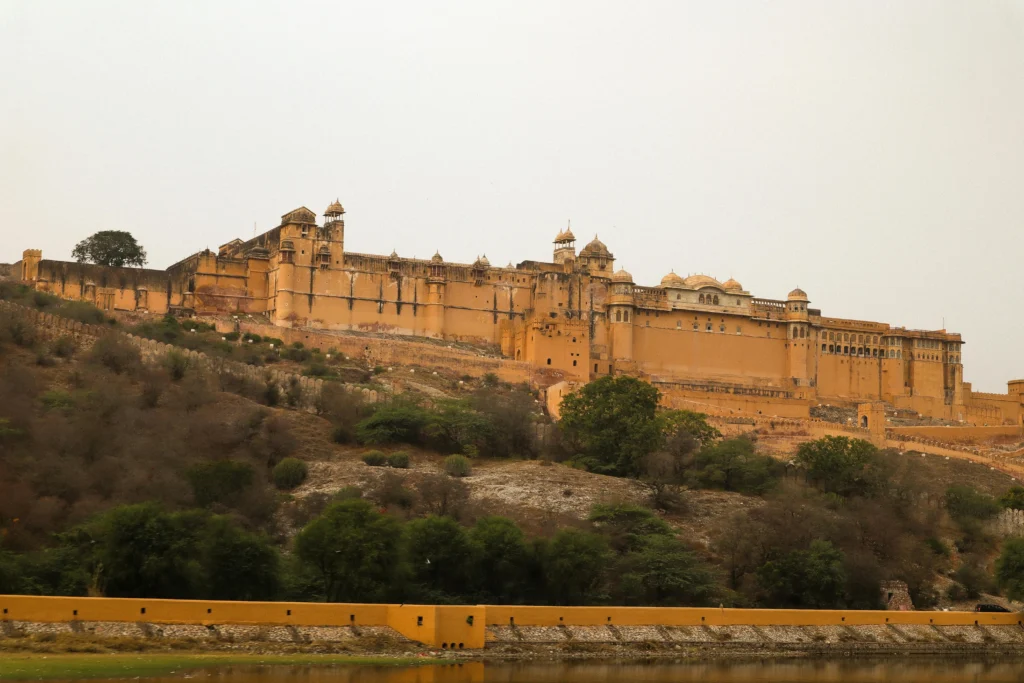
Situated on top of the Aravali Hill, across the Maotha Lake, Amber Fort towers above the city of Jaipur. The fort, a living reminder of the magnificent Mewari of the past, welcomes more than 5,000 visitors every day. Amber Fort, which was part of a larger complex established in the 16th century by Maharaja Man Singh, is made of pink and yellow sandstone. A must-see is Amber Fort, sometimes referred to as Amer Fort. This enormous hilltop fort, which is roughly 11 kilometers from the city center, is a magnificent example of Rajput construction. To get to the fort entrance, you can ride an elephant or a jeep. Examine the following:
Admire the beautiful décor and elaborate mirror work at Sheesh Mahal (Mirror Palace).
Ganesh Pol: An exquisite entrance featuring Lord Ganesh’s artwork.
The public audience hall is called Diwan-i-Aam.
The main courtyard where royal soldiers and horses would congregate was called Jaleb Chowk.
Each of the four sections that make up Amber Fort is decorated with a distinct entryway and courtyard that encloses a number of the palaces inside the complex.
Must-see ~ Activities: Every evening, the Amber Fort hosts a fifty-minute light and sound display that is a great way to learn more about the history of the fort.
Important Advice:
Transportation: The most practical way to get from one location to another is to hire a private taxi or driver for the day. Although they are available, tuk-tuks and autorickshaws may take longer because of city traffic.
Clothes: Dress modestly, especially while visiting temples, and wear comfortable shoes because you will be walking a lot.
Hydration: Because Jaipur may get very hot, especially during the summer, bring a bottle of water and use sunscreen.
Have fun on your Jaipur tour!
